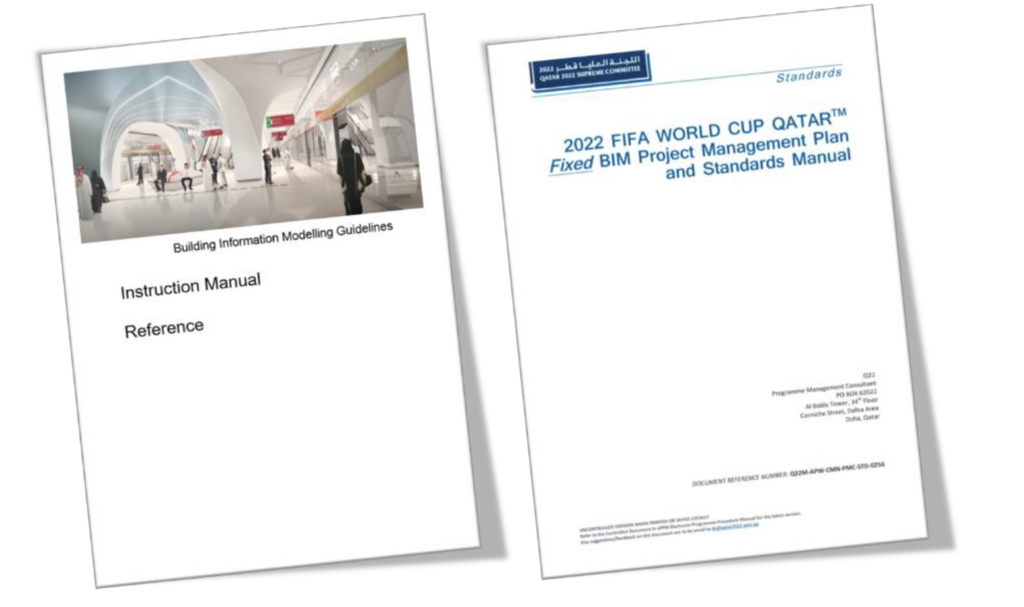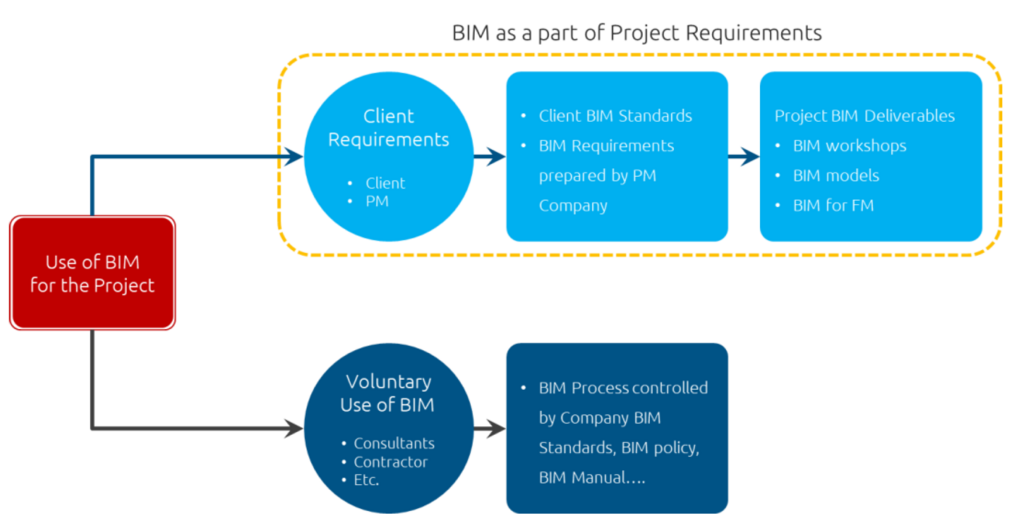THE BEGINNING OF PROJECT BIM JOURNEY
Have you ever thought about how the project BIM implementation is getting started? Why some projects use BIM, and some do not?
In this article, I would like to share my experience of how BIM implement begins for the projects in different circumstances.
Do I have to use BIM for my project?
Generally, there are two cases. The first case is that the Designer/ Contractor is contractually obliged to use BIM for project execution. As I briefly mentioned in my previous article, the mandatory BIM requirement will be placed in the project tender documents in different naming like EIR, BIM Standards, BIM Manual etc.

The second case is that there is no contractual obligation to use BIM for the project execution, but the Designer/ Contractor voluntarily uses BIM for their benefits to project delivery. In this case, a company may have well-established BIM standards at the practice level or a company decided to use BIM for some project where BIM (or 3D modelling) is the only way for design and construction engineering and production of shop drawings.

As you can see in the diagram above, the mandatory BIM requirements can be introduced with generic BIM Standards that the Client (Project Owner) already has and used in their other projects. Sometimes Project-specific BIM requirements can be prepared by the Project Management company after consulting the needs of BIM for the project. It is meaningful as Client has the full control of the BIM deliverable and its production process so that the Client utilizes the BIM data for aimed uses for the project life cycle.
BIM Documents for Project lifecycle
It is important to plan the use of BIM at the early stage of the project lifecycle, ideally at the project initiation stage, as project BIM implementation is about the change of working process. It is critical for the project owner to define the goals of BIM use and utilization target of BIM information (graphical and non-graphical). This will be the guidance to prepare for a project BIM Requirements at the relevant project stage(s).
As I was a BIM manager in the general contractor and the writer of BIM requirements in the Project Management company, I had opportunities to see what is really happening in the construction projects with BIM implementation. Particularly, I prepared for BIM requirements through a number of discussions with the project owner to define the project BIM goals and conduct the technical evaluation for candidate contractor’s BIM proposals where BIM maturity levels can be assumed. I performed as a BIM manager from the Client representative to monitor the contractor compliance with the BIM requirements.
Here I picked two cases as below,
Case 1) The project owner hired a high-profile design team to design a landmark architecture. While the owner like the appearance of the proposed design they concerned whether his design team performed necessary spatial coordination in the unique architectural form of very complex geometry. The project owner wants to maintain an adequate level of design quality for the construction tendering stage.
In this project, the DESIGN BIM was enforced for the design team to show multi-disciplines spatial coordination as a design stage constructability point of view, then it was followed by the mandatory EXECUTION BIM Requirements for a contractor to use BIM for multi-trades coordination and construction engineering which was useful to understand the complexity of building geometry and identify the problems of building services installation in prior to construction works on-site.
Case 2) The project owner is a developer who has a residential project planned for construction phase. The developer wanted to use BIM information for building operation stage with recently introduced their CAFM (Computer Aided Facility Management) system.
In this project, the client has the clear purpose of BIM use for the project. EXECUTION BIM was introduced to the project. The EXECUTION BIM Requirements defined the BIM modelling with construction information (graphical and non-graphical) and progressively checked and updated through construction sequences with as-built site condition. It is important that BIM requirement defines the As-built BIM models(LoD 500) are aligned with CAFM(Computer-Aided Facility Management) asset data requirements.
If the project was not designed through DESIGN BIM, the Contractor’s BIM team may find design issues in the 2D drawings during the BIM modelling. These are a few examples picked from my previous projects.
- Design problems by unseen elements of other disciplines: A door clashed with steel structure bracing which normally limited by a 2D-based design collaboration process.
- Drawing drafting issues: A 2D drawing has manually inserted incorrect dimension which was identified headroom height issues during the EXECUTION BIM modelling. It was the QA/QC issue of Designer that required significant redesign work.
- Design Coordination issues: In some project, the revision of HVAC layout is one of the main tasks by the lack of ceiling above spaces and some constraints at the originally designated location in the design documents.
The diagram shows the types of BIM documents for the project lifecycle and the sets of documents highlighted in the reds are the generic documents that can be customized as per the needs of projects.

Mandatory BIM Requirements for Japanese AEC Companies
While there are still lesser projects with mandatory BIM requirements in Japan comparing to overseas projects, the Japanese AEC companies are to sensibly maintain the BIM maturity and BIM execution capability for their upcoming projects in the overseas market. It is worth highlighting again that BIM is not just an additional deliverable to the 2D-based submissions. It is a working process to be integrated into the traditional working process and the BIM integrated working process potentially brings great benefits to the project execution rather than something hectic tasks.
This is very important to understand all requirements related to BIM written at several locations in the project (design/construction) tender documents and carefully check and update from the traditional work plans. This is where the support from project leadership (like project director, project manager, or similar) is critical somehow this is often missed in the field, unfortunately.
BIM requirements of the construction stage normally much more items to be considered. From the diagram below, you can see how project BIM implementation affects the construction Scope of Works and this is what I also work for some construction tendering projects.

In the previous projects, we saw “one sentence of BIM requirements” to “a book like BIM requirements” and we begin the project BIM journey with them. We carefully analyse the documents and clarify issues just to make” Well begun”.
“Well begun is half done.” – Aristotle